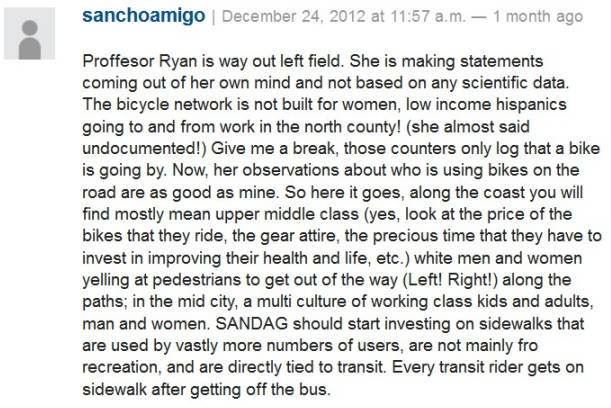It had to happen. Someone had to make the first move towards automating and documenting cycling traffic patterns. That someone is San Diego State University’s Active Transportation Research Center. They recently implemented a bike-monitoring program called Bikes Count. As a result, San Diego now has the largest regional, interconnected automatic bicycle and pedestrian counting system in the country.
The purpose of the program is to learn about cyclists on city streets, including which roadways they frequent most and when the peak hours of bicycle traffic occur. To get the Bikes Count program off the ground, the San Diego County Health Department provided a $16 million grant. This money paid for researchers to install electronic sensors, underneath the asphalt, in 28 locations throughout San Diego County.
Not unlike the sensors that sense cars to trigger lights, these sensors sense bicycles. Each time a bicycle rolls over a sensor, one more number is added to a running tally.
Sherry Ryan, a public affairs professor at San Diego State University manages the Bikes Count program. She explained the technology used as follows:
“So we have a small computer basically installed in the sidewalk,” she said, describing the technology. “It’s attached to an inductive loop that runs out into the asphalt. And when a cyclist goes over the loop, it triggers a count.”
Using a loop in the road to register bikers is innovative, Ryan went on to say, and the vendor used for this technology is the only one that provides this service.
Three months after the sensors had been set in place, they had already learned a lot about bike traffic volume in San Diego. For instance, the number of daily bike trips varied quite a bit; on a given road, traffic ranged from 25 to 2,500 trips per day.
The counts can be used to make educated guesses about why people are riding. For example, if a particular sensor shows a lot of traffic on a weekend, it may mean that those cyclists are riding for recreation. Other sensors may show a different picture.
Peak days occur during the week in certain places in the San Diego area. Professor Ryan offers the following explanation for this difference.
“When look at those numbers we see peaking on a Tuesday, Wednesday and Thursday. Just based on my experience going out to those locations, mostly low-income Hispanic cyclists getting to work.”
Other facts were gleaned by the researchers using the new data. They noticed that bike paths which separate bikes from car traffic were the most popular routes. Unmarked bike routes were the second most popular. And surprisingly, roads with bike lanes were least popular. A possible explanation is that many of the bike lanes are located on roads heavily used by cars.
In addition to the underground sensors, human counters are also used to observe bike traffic. Among their observations were that 80 to 90 percent of cyclists in the monitored area were men and that many people ride their bikes on the sidewalks. Both of these things were attributed to safety concerns and a cyclist’s desire to avoid sharing the road with cars. Lack of adequate safety measures, the researchers thought, might explain why so few women were riding bikes on the streets.
Given the amount of money being spent on this program and the introduction of technology designed to assist and promote the inclusion of bicycles in road planning, the lack of comments on this subject is surprising. One of the few comments left on an article about this topic reflected the typical anti-bicycle stance. However, it had a new twist. Instead of attacking just the cyclists, the attack was levied against the program manager, Sherry Ryan.

This commenter misconstrued everything Professor Ryan said. He/she misunderstood half of her points, even though the news site where this information was reported contained two articles, a video interview (see video below) and a transcript of the video.
Ryan didn’t “mak[e] statements coming out of her own mind and not based on any scientific data.” The observations she mentioned about women and Hispanic riders came from reports by human observers or her own observations, not the sensors.
The commenter’s lack of attention and poor reading comprehension is not much different from what cyclists often observe when watching drivers. They are distracted and do not comprehend the situation around them. Too often this results in their not seeing a cyclist nearby.
If the technology being used in the Bikes Count program becomes available throughout the country, more comprehensive data can be compiled to understand how cyclists use the roads and how to better accommodate them. Technology provides the most efficient way to turn speculation into fact. And the facts generated by technology are the quickest way to turn plans into reality. Bicycle advocates should take note.


